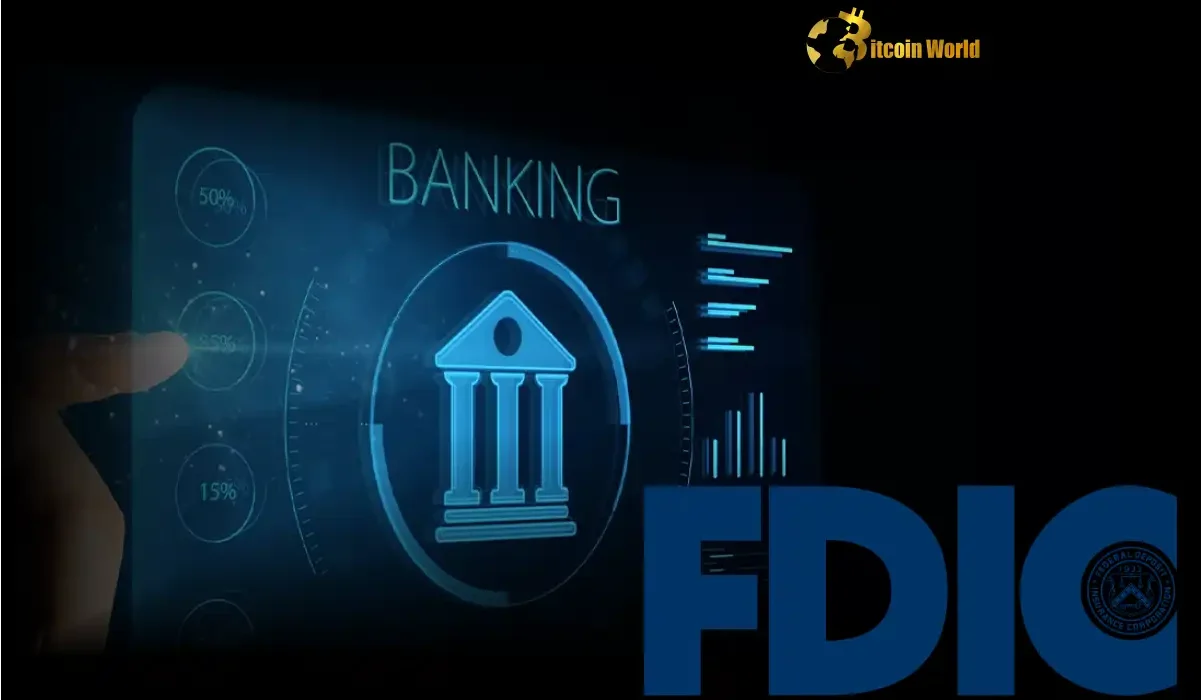The cryptocurrency world is buzzing with excitement following the U.S. Federal Deposit Insurance Corporation’s (FDIC) latest guidance on banks engaging with crypto-related activities. This move is being hailed as a potential game-changer, paving the way for wider crypto adoption and greater mainstream acceptance. David Sacks, a prominent voice in the tech and crypto space, has lauded the FDIC’s initiative, signaling a significant shift in the regulatory landscape. Let’s dive into what this means for the future of crypto and traditional finance.
Why is FDIC Guidance a Big Deal for Crypto Adoption?
For years, one of the major hurdles for cryptocurrency has been bridging the gap between the decentralized world of digital assets and the established framework of traditional finance. Banks, as cornerstones of the financial system, have been hesitant to fully embrace crypto due to regulatory uncertainties and perceived risks. The FDIC’s new guidance aims to clarify the rules of engagement, making it easier and safer for banks crypto to participate in the digital asset ecosystem.
Here’s why this guidance is being celebrated as a pivotal moment for mainstream crypto:
- Clarity and Confidence: The FDIC’s guidance provides a clearer framework for banks, reducing ambiguity and fostering confidence in their ability to engage with crypto activities compliantly. This clarity is crucial for banks that were previously hesitant to enter the space due to regulatory gray areas.
- Reduced Risk Perception: By outlining how banks can safely engage in crypto, the FDIC is implicitly acknowledging the legitimacy and growing importance of digital assets. This can help reduce the perception of crypto as a risky and unregulated sector, encouraging broader institutional and retail participation.
- Increased Liquidity and Accessibility: With banks entering the crypto space, it could lead to increased liquidity in the market and make crypto services more accessible to the general public. Banks can offer regulated and insured avenues for buying, selling, and holding cryptocurrencies, which can be reassuring for new users.
- Fueling Innovation: As banks become more comfortable with digital assets, it can spur innovation in financial products and services. We could see the development of new hybrid offerings that blend the best of traditional banking with the dynamism of the crypto world.
David Sacks’s Optimistic View: A Mainstream Crypto Catalyst?
David Sacks, known for his insightful commentary on technology and finance, took to X (formerly Twitter) to express his positive outlook on the FDIC’s guidance. He specifically credited the FDIC’s initiative for making it simpler for banks to engage in digital asset operations. His appreciation for the agency and Acting Chairman Travis Hill underscores the significance of this regulatory development. Sacks stated that this move is “one of the best ways to mainstream crypto further,” highlighting the potential for widespread integration of crypto into the financial mainstream.
Sacks’s endorsement carries weight in the tech and investment communities. His perspective reinforces the idea that regulatory clarity, as provided by the FDIC, is a vital ingredient for the continued growth and acceptance of cryptocurrencies.
What Does the FDIC Guidance Actually Say?
While the full details of the guidance are being analyzed by industry experts, the core message is clear: the FDIC is providing a pathway for regulated banks to participate in certain crypto-related activities under specific conditions. This likely includes areas such as:
- Custody Services: Banks could offer custody services for digital assets, providing secure storage solutions for institutional and retail clients.
- Stablecoin Activities: The guidance may address how banks can handle stablecoins, potentially facilitating their use in payments and settlements.
- Blockchain Technology Integration: Banks might be exploring ways to integrate blockchain technology into their existing infrastructure to improve efficiency and transparency.
It’s crucial to note that the FDIC is expected to maintain a cautious approach, emphasizing consumer protection and financial stability. The guidance likely includes safeguards and requirements for banks to manage risks associated with crypto assets, such as volatility and cybersecurity threats.
Challenges and Considerations for Banks Entering Crypto
While the FDIC guidance is a positive step, banks venturing into the crypto realm will still face challenges. These may include:
| Challenge | Description |
|---|---|
| Regulatory Compliance | Navigating the evolving regulatory landscape for crypto assets will be complex. Banks will need to ensure they comply with all applicable rules and regulations, which can vary across jurisdictions. |
| Technological Expertise | Understanding and managing the underlying technology of cryptocurrencies and blockchain requires specialized expertise. Banks will need to invest in talent and infrastructure to effectively handle digital assets. |
| Risk Management | Crypto assets are known for their volatility and unique risk profiles. Banks will need to develop robust risk management frameworks to mitigate potential losses and protect consumer deposits. |
| Public Perception and Education | Educating customers about crypto assets and addressing public concerns will be important for banks to build trust and encourage adoption. |
Actionable Insights: What to Watch For
For those interested in the intersection of traditional finance and crypto, here are some actionable insights and things to watch:
- Monitor Bank Announcements: Keep an eye on announcements from major banks regarding their crypto initiatives. This will provide real-world examples of how the FDIC guidance is being implemented.
- Track Regulatory Developments: Stay informed about further regulatory updates from the FDIC and other agencies. The regulatory landscape for crypto is still evolving, and ongoing developments will shape the future of bank involvement.
- Observe Market Trends: Analyze how the market reacts to banks entering the crypto space. Increased institutional participation could influence market dynamics and price movements.
- Engage in Dialogue: Participate in discussions and forums about the role of banks in crypto. Your insights and perspectives are valuable in shaping the future of this evolving industry.
Conclusion: A Groundbreaking Leap Towards Crypto Mainstream
The FDIC’s guidance on banks and crypto is undeniably a groundbreaking development. It signals a maturing of the crypto industry and a growing recognition from regulatory bodies of the need to integrate digital assets into the mainstream financial system. David Sacks’s enthusiastic endorsement further underscores the potential of this initiative to accelerate crypto adoption and pave the way for a more inclusive and innovative financial future. While challenges remain, this guidance represents a significant leap forward, promising to reshape the landscape of both banking and cryptocurrency.
To learn more about the latest crypto market trends, explore our article on key developments shaping Bitcoin institutional adoption.
Disclaimer: The information provided is not trading advice, Bitcoinworld.co.in holds no liability for any investments made based on the information provided on this page. We strongly recommend independent research and/or consultation with a qualified professional before making any investment decisions.


